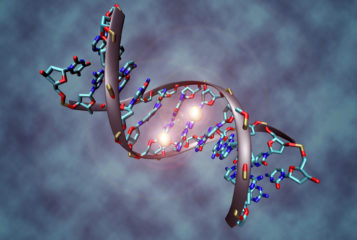A mutation in a gene that regulates the structure of DNA has been linked to a subtype of autism.
In a study in the journal Cell, scientists checked for variations in the CHD8 gene of 3,730 children with autism or developmental delay. They identified eight people carrying mutations in the gene, but no mutations were found in the control group of around 9,000 unaffected children, indicating a strong link to autism despite the small numberof carriers.
The children with the mutation share similar clinical characteristics. They have wide set eyes and large foreheads, and most have trouble sleeping and gastrointestinal problems. In the study, the researchers combined their observations of these children with clinical reports of another seven children with the same autism subtype.
'We finally got a clear cut case of an autism-specific gene', said Dr Raphael Bernier, the lead author and clinical director of the Autism Center at Seattle Children's Hospital in the USA. 'This will be a game changer in the way scientists are researching autism'.
To examine the role of the mutant version of CHD8, the team worked with scientists at Duke University in the USA who study zebrafish. When they disrupted the gene in the zebrafish, they developed large heads, wide set eyes and were constipated - similar to the symptoms observed in the affected individuals.
Autism, a developmental disability that affects behaviour and social interaction, is complex and manifests itself to varying degrees and may have many subtypes. Researchers have traditionally tried to distinguish different subtypes based on behavioural differences. But as Dr Bernier told Scientific American: 'We've tried for so long to identify subtypes of autism based on behaviour alone and we've done abysmally at that'.
The researchers involved in the study say that the reverse approach — investigating patients who carry identical genetic mutations and seeing if their symptoms also cluster — could prove more fruitful, especially when it comes to designing specific treatments.
But researchers in the past have suggested that most cases of autism cannot be put down to one genetic mutation. Rather, a large variety of different types of genetic variations, perhaps with chromosome rearrangements or copy number variations may work in concert. An environmental role is also hotly debated.
'I think the most important realisation is that not all autisms are created equal', Dr Evan Eichler, who was in charge of the genetics side of the study, told Scientific American.
The researchers are now looking for more people with CHD8 mutations, hoping to further characterise the link between the gene and autism. They have access to a worldwide genetic database of 15,000 people with developmental disorders with permission to contact affected families.
Sources and References
-
Disruptive CHD8 Mutations Define a Subtype of Autism Early in Development
-
Researchers find genetic link to autism known as CHD8 mutation
-
Have scientists found the autism GENE? Breakthrough as specific link between DNA and the condition is discovered
-
Genetic Mutation May Lead to Autism Subtype
-
Scientists Find Gene for Form of Autism





Leave a Reply
You must be logged in to post a comment.